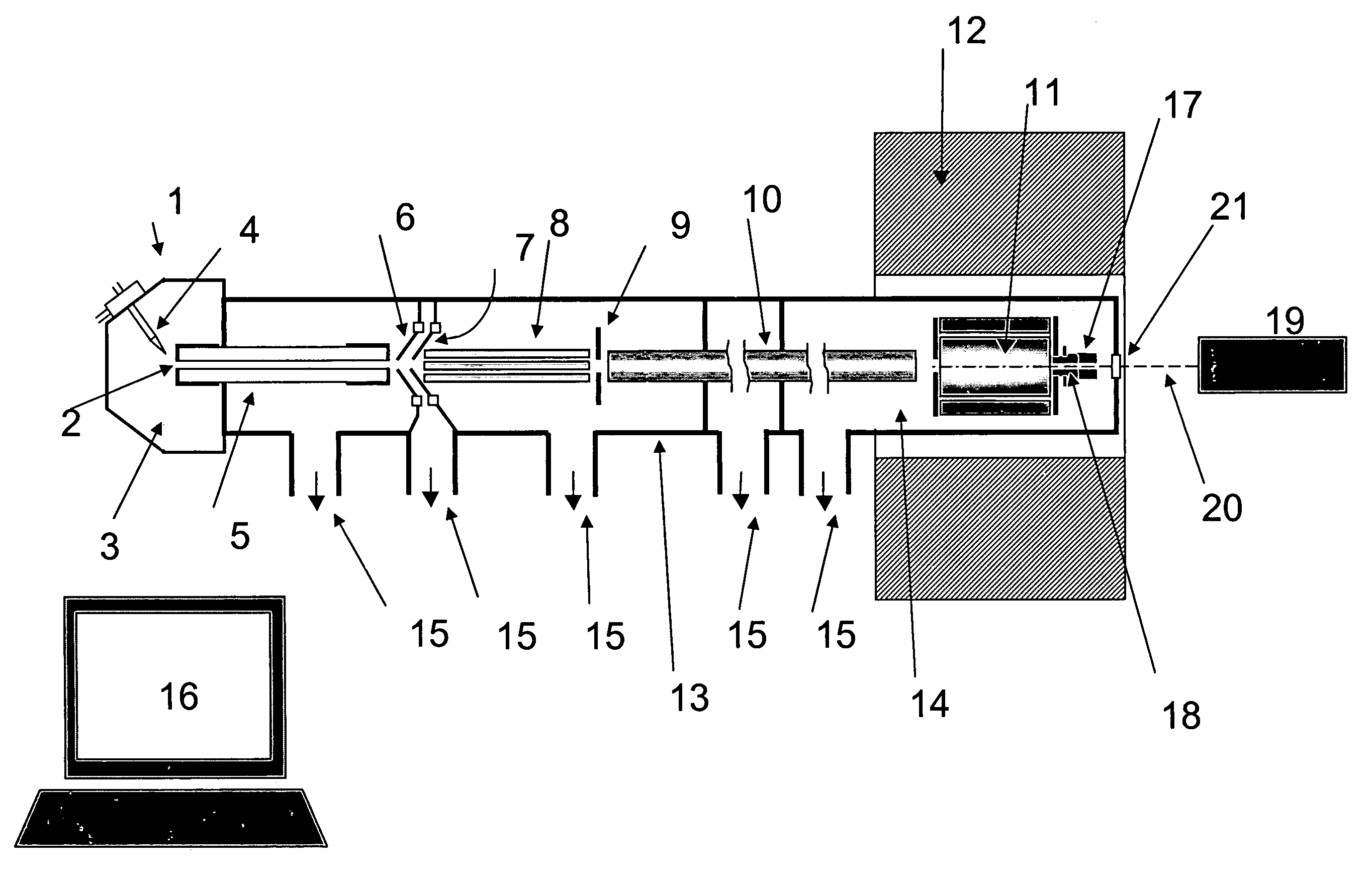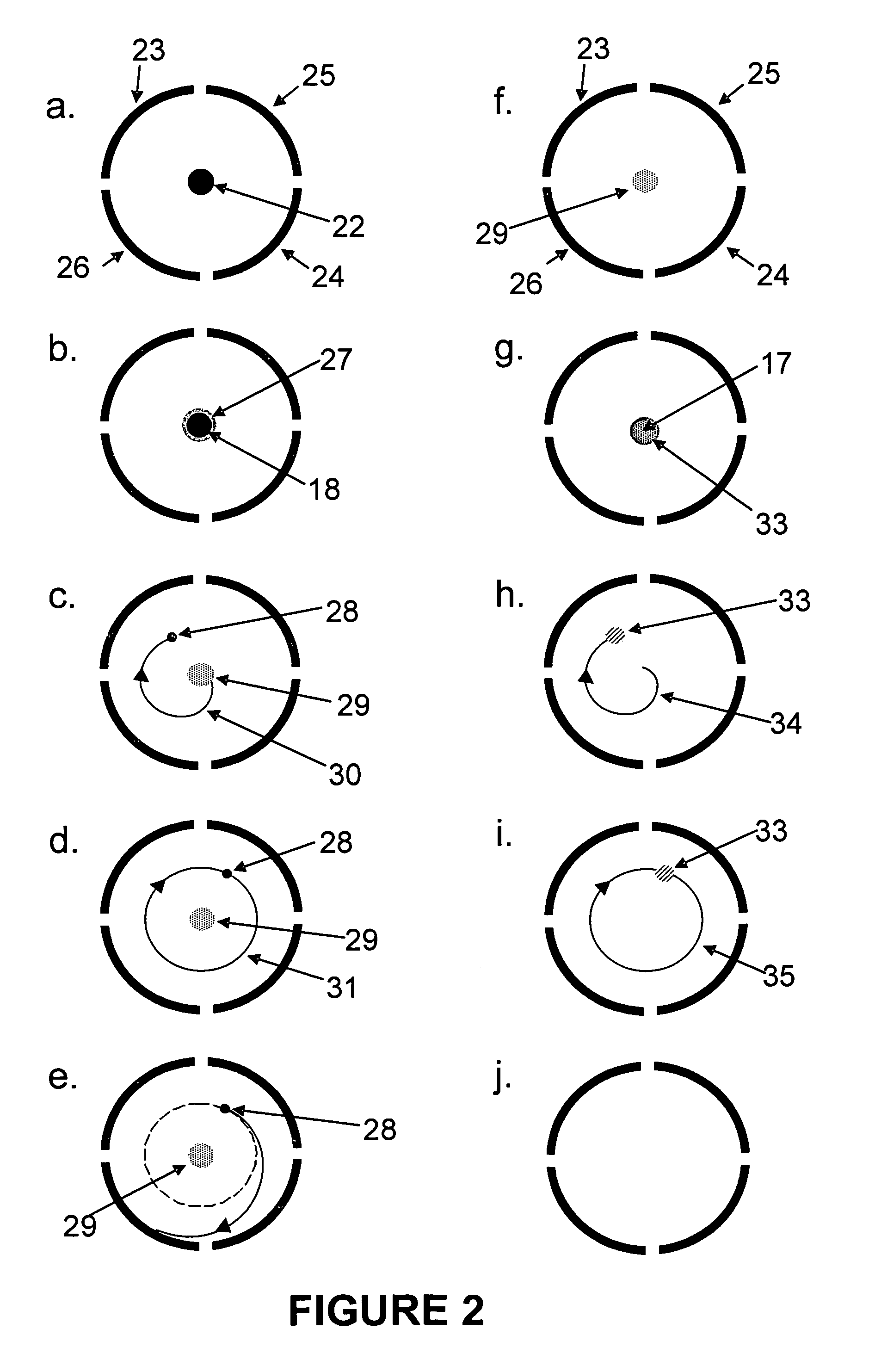Tandem mass spectrometry method
a mass spectrometry and tandem technology, applied in the field of tandem mass spectrometry, can solve the problems of collisional and infrared dissociation becoming ineffective for large molecular masses, loss of location information, and serious drawbacks of all ve techniques, so as to reduce the time of analysis, increase the sensitivity of fixed analysis time, and reduce time
- Summary
- Abstract
- Description
- Claims
- Application Information
AI Technical Summary
Benefits of technology
Problems solved by technology
Method used
Image
Examples
example 1
[0032]Tandem mass spectrometry using a Fourier transform ion cyclotron resonance mass spectrometer: The first particular embodiment is illustrated in FIG. 1 that presents a schematic diagram of a Fourier transform ion cyclotron resonance mass spectrometer. The mass spectrometer is composed of an electrospray ion source (1). The electrospray source has an atmosphere-vacuum interface (2). Ions formed in the spray chamber (3) by electrospray from the spray needle (4) enter the electrospray capillary (5). After the capillary, the ions pass the first skimmer (6) and the second skimmer (7), and enter a linear radiofrequency (RF) multipole ion trap used as ion accumulation multipole (8). Here, the ions are trapped radially by the RF multipole (8) and axially by the reflective potentials of the second skimmer (6) and the trap / extract electrode (9). Ions can be accumulated in this linear multipole ion trap and then extracted at a pre-determined time by changing the polarity of the trap / extra...
example 2
[0036]A tandem mass spectrometry method may take place in a three-dimensional quadrupole ion trap mass spectrometer. Similar to the method applied in Fourier transform ion cyclotron resonance mass spectrometry in a radiofrequency quadrupole trap (Paul trap) mass spectrometer, ions can be generated by electrospray and before they are transferred into the trap for analysis, they can be accumulated in a spatially limited region, in a radiofrequency multipole which is used as a linear trap. FIG. 3 shows such a system. (1) is the electrospray ion source, (2) is the vacuum interface, the entrance of the electrospray capillary (5). The sample is sprayed through a spray needle (4) in the spray chamber (5). Ions pass through the electrospray capillary (5) and two skimmers (6) and (7) and enter the linear radiofrequency multipole trap (8) for accumulation. The trap / extract electrode (9) has a positive voltage to trap positive ions in the linear multipole (8). After a desired time of accumulat...
PUM
| Property | Measurement | Unit |
|---|---|---|
| energy | aaaaa | aaaaa |
| energy | aaaaa | aaaaa |
| energy | aaaaa | aaaaa |
Abstract
Description
Claims
Application Information
 Login to View More
Login to View More - R&D
- Intellectual Property
- Life Sciences
- Materials
- Tech Scout
- Unparalleled Data Quality
- Higher Quality Content
- 60% Fewer Hallucinations
Browse by: Latest US Patents, China's latest patents, Technical Efficacy Thesaurus, Application Domain, Technology Topic, Popular Technical Reports.
© 2025 PatSnap. All rights reserved.Legal|Privacy policy|Modern Slavery Act Transparency Statement|Sitemap|About US| Contact US: help@patsnap.com



